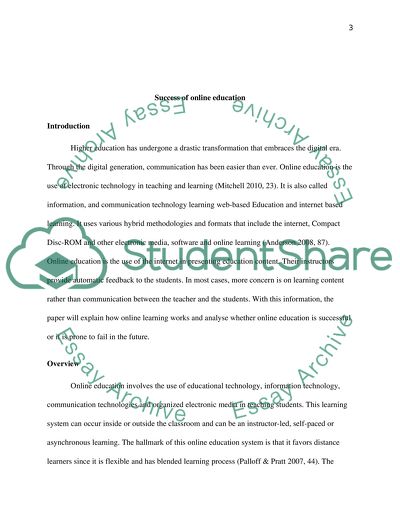Cite this document
(“Is online education proving to be successful Essay”, n.d.)
Is online education proving to be successful Essay. Retrieved from https://studentshare.org/information-technology/1668474-is-online-education-proving-to-be-successful
Is online education proving to be successful Essay. Retrieved from https://studentshare.org/information-technology/1668474-is-online-education-proving-to-be-successful
(Is Online Education Proving to Be Successful Essay)
Is Online Education Proving to Be Successful Essay. https://studentshare.org/information-technology/1668474-is-online-education-proving-to-be-successful.
Is Online Education Proving to Be Successful Essay. https://studentshare.org/information-technology/1668474-is-online-education-proving-to-be-successful.
“Is Online Education Proving to Be Successful Essay”, n.d. https://studentshare.org/information-technology/1668474-is-online-education-proving-to-be-successful.


